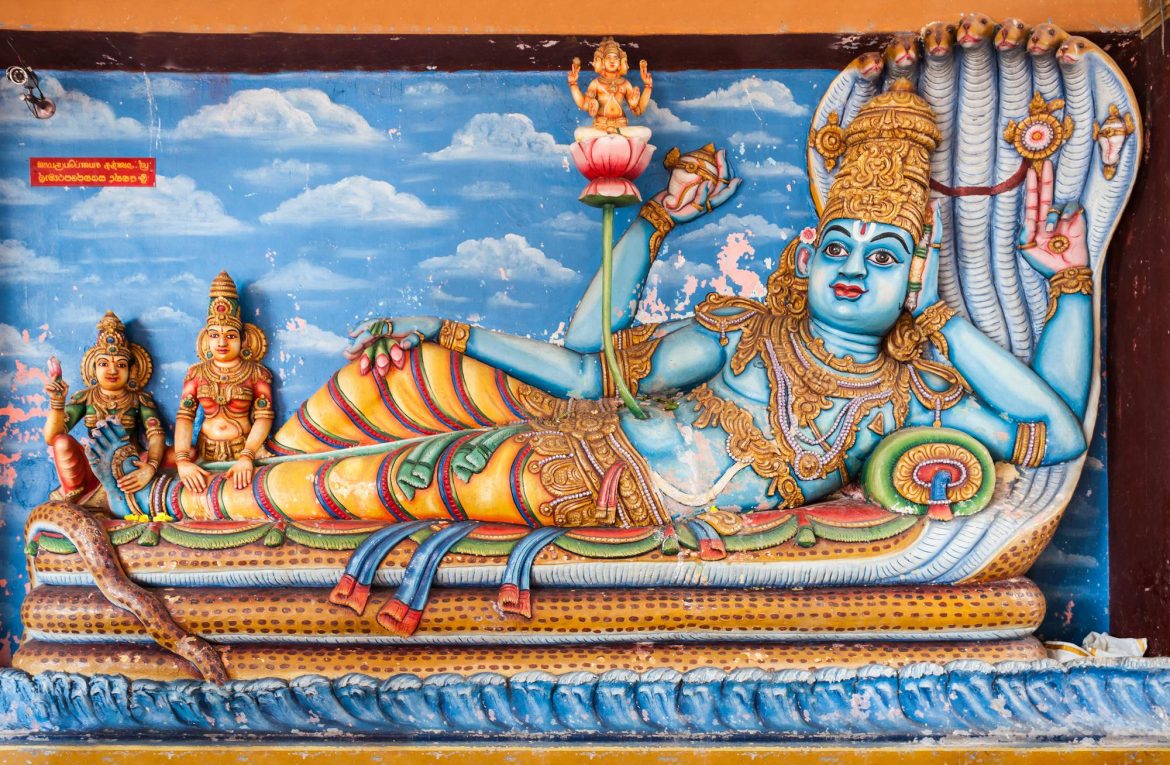Introduction
In Hindu cosmology, Kali Yuga is considered a unique epoch. Its conclusion and the beginning of Dvapara Yuga have fascinated scholars and spiritual seekers for centuries. This article explores the mystery surrounding the end of Kali Yuga and what lies ahead for humanity in the next Yuga.
Exploring Kali Yuga
In Hindu cosmology, Kali Yuga is the final epoch among the four Yugas. It is distinguished by a period of moral decline, spiritual degradation, and societal turmoil. This concept holds great significance in Hindu philosophy, offering insights into the cyclical nature of time and the perpetual cosmic rhythm.
When Did Kali Yuga End?
Pinpointing the exact end of Kali Yuga requires complete calculations and interpretations. Ancient texts like the Puranas and Mahabharata provide clues, and scholars have proposed different timelines. However, determining an exact date remains uncertain, allowing for various beliefs.
The Transition To The Next Yuga
In Hindu tradition, the transition between Yugas is not abrupt but gradual. This transitional period, the Sandhi Kal, encompasses shifts in human consciousness and societal structures. It is a time of adaptation, where old ways make room for new ones, and spiritual seekers look forward to the emergence of a more harmonious era.
Different Perspectives
Hinduism has diverse interpretations of the Yugas due to the religion’s varied beliefs and sects. While the core concept remains consistent, different groups within Hinduism may emphasize specific aspects of the Yugas, resulting in variations in understanding.
The Spiritual Implications Of Kali Yuga’s End
The end of Kali Yuga holds deep spiritual significance in Hinduism, as it presents an opportunity for seekers of truth to further their spiritual journey. Spiritual progress can be hindered in this age, known for materialistic pursuits and moral decline. However, as the era comes to a close, there’s a belief that individuals will find it easier to connect with the divine.
In the subsequent age known as Dvapara Yuga, there is a noticeable resurgence of spirituality and wisdom. During this time, individuals are more inclined to seek higher knowledge and participate in spiritual practices. This transition allows people to break free from ignorance and embark on profound spiritual journeys.
Preparing For The Yuga Transition
While the exact timing of the transition from Kali Yuga to Dvapara Yuga is uncertain, individuals can actively engage in spiritual growth and moral conduct to align with the changing cosmic energies and be better prepared.
A key principle in this philosophy is living a life based on dharma, which encompasses practicing ethical behavior, showing compassion to all beings, and upholding truth and integrity. By following these principles, individuals experience personal spiritual growth and contribute to creating a more harmonious society. This aspect holds great significance within the Yuga cycle.
The Universal Perspective On Yugas
The notion of Yugas has fascinated scholars and seekers from various cultures and religions, extending beyond the boundaries of Hinduism. Many find intriguing connections between the Yuga cycle and other cyclic concepts across different traditions.
For example, the idea of cyclical cosmic patterns is not unique to Hinduism. In Western astrology, the precession of the equinoxes is comparable to the Yuga cycle, just with different terminology. Furthermore, ancient Mayan and Mesoamerican civilizations also embraced cyclic worldviews, indicating that the concept of cosmic cycles transcends any specific religious belief.
By exploring these universal perspectives, we gain a broader understanding of the cyclical nature of existence and our ongoing search for spiritual growth.
What’s Next After Kali Yuga?
As Dvapara Yuga dawns, it brings a transformative shift towards greater virtue and spiritual awakening. Knowledge and wisdom become paramount during this age, strengthening humanity’s connection to the divine. It is an era characterized by growth and enlightenment that starkly contrasts the darkness of Kali Yuga.
How Can One Determine The End Of Kali Yuga In Hinduism?
Determining the end of Kali Yuga in Hinduism is a complex concept. It is not defined by a specific date but rather observed through societal and spiritual transformations. Ancient texts like the Puranas offer insights into the signs that indicate this transition, including diminishing morality and escalating conflicts.
What Are The Main Characteristics Of Kali Yuga?
Kali Yuga is known for its moral decline, materialistic values, decreased spirituality, and heightened discord and conflict. It is often referred to as an era of darkness and ignorance.
Is There A Consensus Among Scholars Regarding Kali Yuga’s End Timing?
Scholars disagree on the specific timeline for the end of Kali Yuga. Different interpretations and perspectives offer varying timelines for when the Yuga cycle transitions.
How Does The Concept Of Yugas Impact Daily Life And Spirituality In Hinduism?
The concept of Yugas is a reminder that existence is cyclical and the material world is impermanent. It encourages individuals to prioritize spiritual growth and moral values, particularly during the difficult period of Kali Yuga.
Are There Scientific Or Historical References To The Yugas?
Information about the Yugas in scientific and historical references is limited. Some scholars have tried to establish links between the Yugas and astronomical or geological events, but these connections are still uncertain and subject to ongoing debate.
How Do Different Sects Within Hinduism View The Yugas?
Various sects within Hinduism may hold different perspectives on the Yugas. Some emphasize the spiritual aspect, while others prioritize the symbolic and metaphorical meanings. Despite these varied interpretations, the fundamental concept remains consistent.
Is the transition from Kali Yuga to Dvapara Yuga sudden or gradual?*
The shift from Kali Yuga to Dvapara Yuga is a gradual process characterized by subtle transformations in human consciousness and societal values. This gradual transition enables adaptation and facilitates spiritual growth.
Conclusion
In Hindu philosophy, the transition from Kali Yuga to Dvapara Yuga represents a significant turning point in the grand cycle of time. Although it is difficult to precisely determine when this transition occurs, the essence of this spiritual journey lies in recognizing the signs of change and seeking a deeper spiritual awakening as we navigate through different ages. This eternal journey reminds us of the cyclical nature of existence and our continuous quest for higher truths. The wisdom within the Yugas is a guiding light along humanity’s timeless path.


